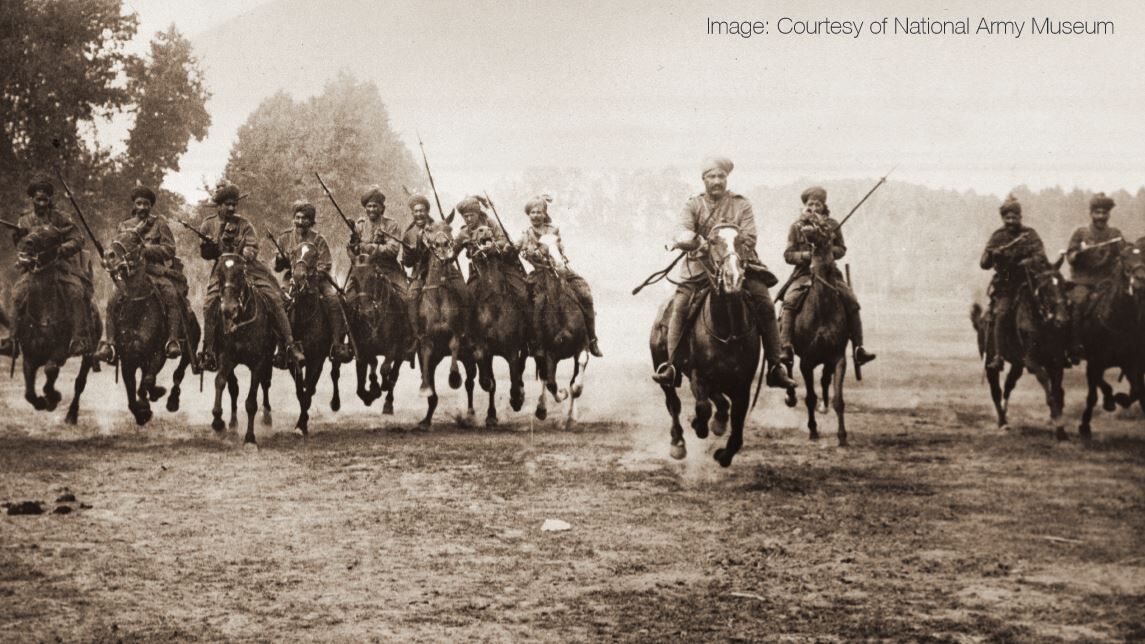Animals
Although a key aspect of the war was its new reliance on technology – from aircraft to poison gas – animals were still an essential part of the war effort. The British used more than a million horses and mules in total. The Indian ports didn’t only send humans to fight, then, but animals too – around 175,000.

Of these, around half were horses, which totaled around 86,000. Around 150,000 of the animals, or 85%, were were horses, ponies and mules. The rest were camels and cattle.
Over 100,000 of the animals were sent to serve in Mesopotamia, while 40,000 of the horses and mules were sent to France.
Horses
The horses were used for different purposes, from supply to riding to old-fashioned cavalry. The Indian Army often used horses to drag the war carts, and at the outbreak of the war, there were 39 cavalry regiments in the Indian Army. When the army was split into 9 divisions, each of these had a cavalry brigade, in addition to the 3 infantry brigades.
During the Mesopotamian campaign, many regiments had Mobile Veterinary Sections that would take care of the animals. Regimental diaries were kept to record the conditions of the animals and any injuries or losses. Around 15% of horses died, though only a quarter of these died in battle; the rest suffered from debility, ‘a condition caused by exposure to the elements, hunger and illness’.
After the war, most horses and mules were left in France, Belgium and Mesopotamia, where they had been based. Some were maintained for the British Army in India. Only the healthiest horses were brought back to Britain: some were kept in the army, but the majority were sold to farmers. The oldest ones were sold to butchers, as the war had resulted in food shortages across the continent. 